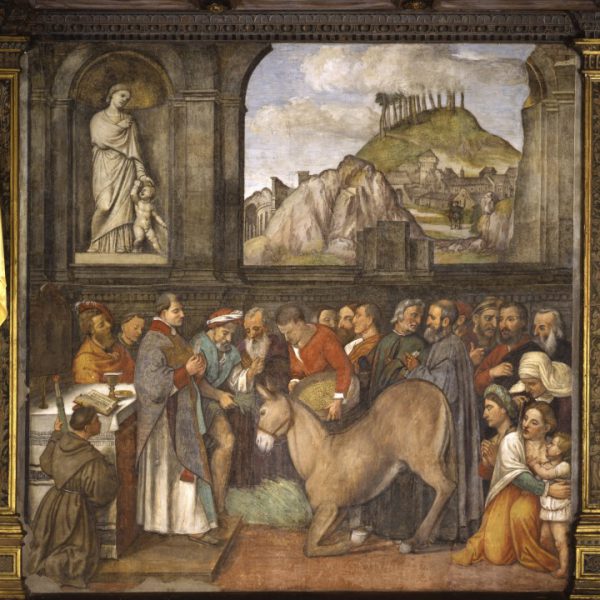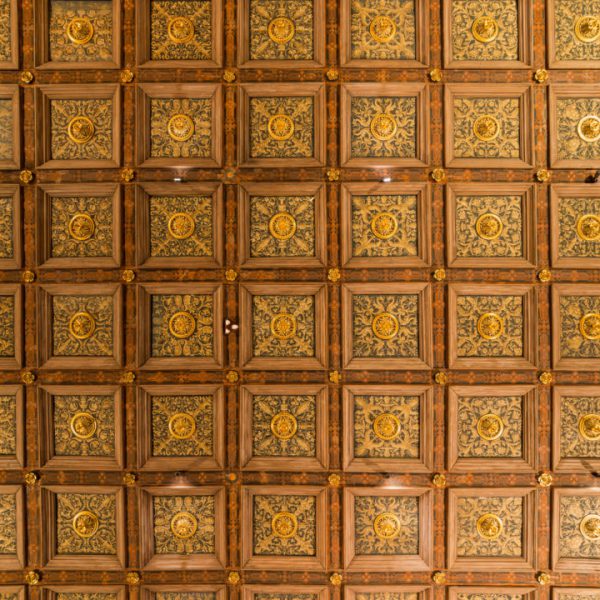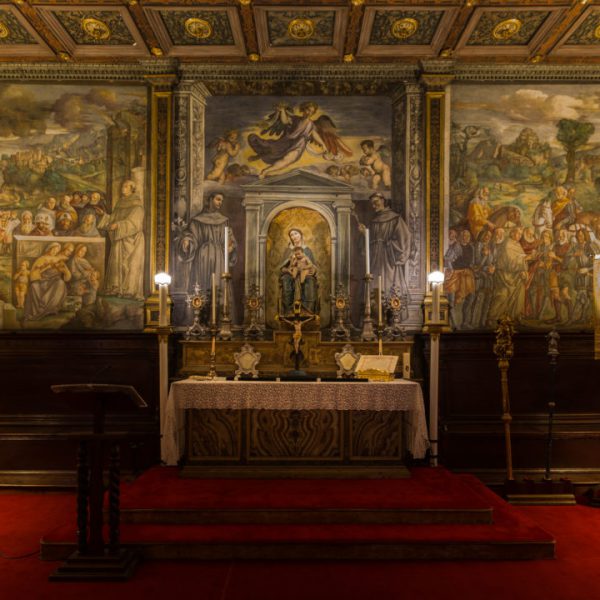Home of the Archconfraternity of Sant’Antonio, the so-called Scoletta del Santo (Corporation/Company of the Saint) rests on the churchyard of the basilica, adjacent to the oratory of San Giorgio. The building was built starting in 1427. The lower floor of the structure was completed between 1427 and 1431. In 1504 the building was raised further. Although the new section coherently followed the style of the existing parts of the building, the two construction phases are clearly distinguishable in the facade. The new space was meant to be a meeting room, and it was soon enriched by a cycle of frescoes depicting episodes from the life of Saint Anthony and his miracles. The pictorial decoration began in 1510 and included the frescoes depicting the miracles of the infant, the jealous husband and the restored foot, all commissioned to Tiziano Vecellio. These frescoes are now considered the masterpieces of the painter’s youth. Other episodes were added in the following years, belonging to Bartolomeo Montagna of Vicenza, Girolamo Tessari, Giovanni Antonio Requesta and Domenico Campagnola of Padua. On the main altar, there is a Madonna and Child in polychrome terracotta, made by Andrea Briosco, known as il Riccio (the curly-haired). The meeting room, or Priorale, retains the original coffered ceiling and wooden furniture, dating between 1506 and 1510. The ceiling was carved by Giovanni Cavalieri and painted by Domenico Bottazzo, while the furniture was made by Girolamo da Piacenza. The oratory is located on the ground floor and has been remodeled several times over the centuries. It houses an altarpiece by Alessandro Varotari, known as Padovanino, located on the main altar. The resulting space – between the Scoletta and the oratory of San Giorgio – was filled in 1736 with the construction, based on a project by Andrea Gloria, of a small two-story building that incorporates a monumental staircase leading to the meeting room. On the façade, there is a small balcony called Loggia of the blessings.













